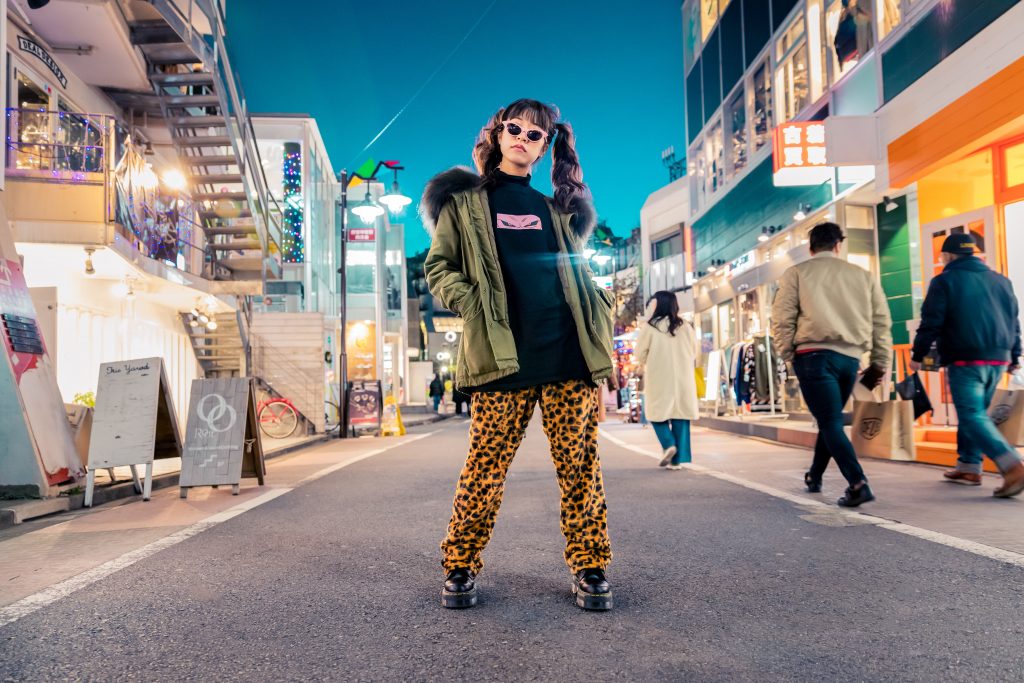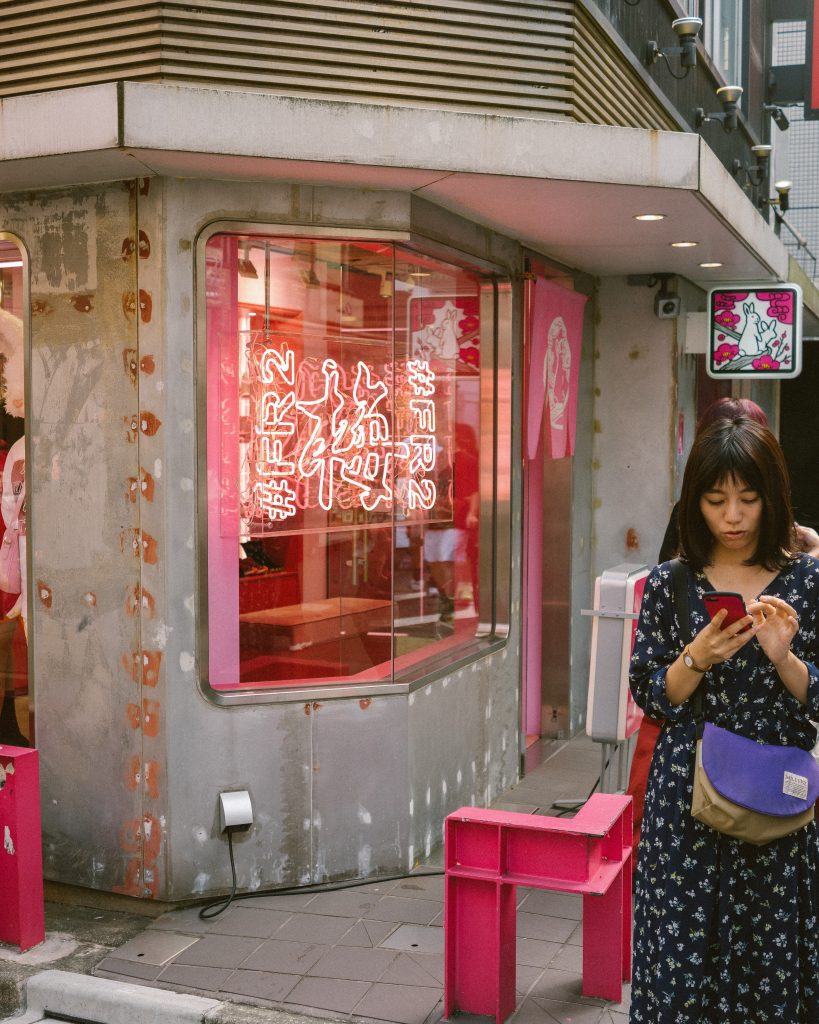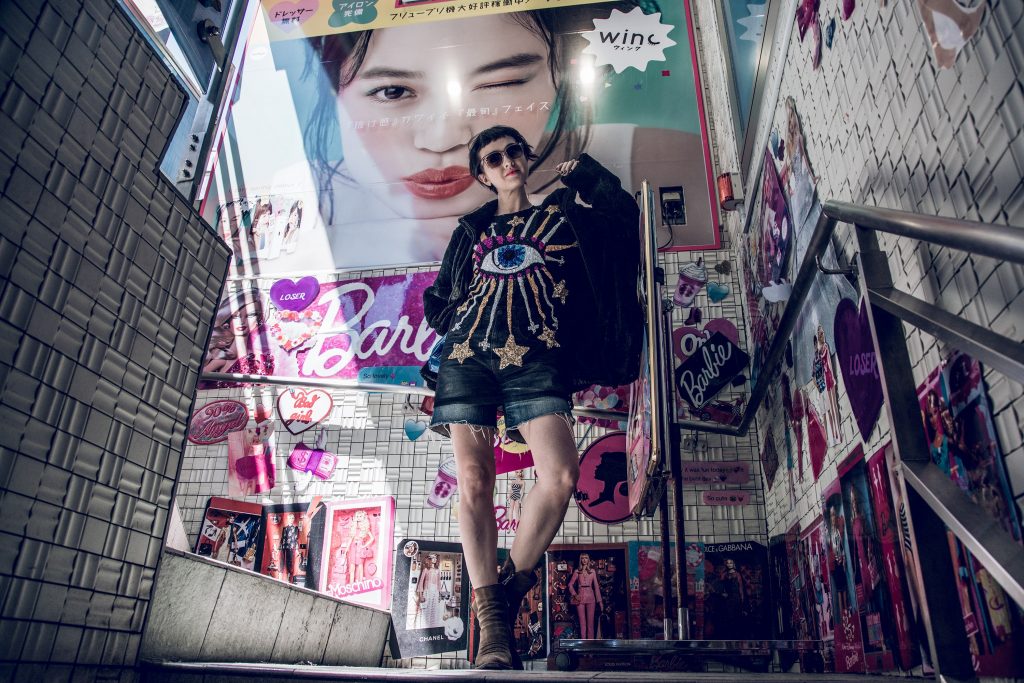Wild and creative, Harajuku Fashion isn’t just a style: it’s a movement against societal rules and fashion boundaries. What started as an ‘anti-fashion’ movement in the 80’s is now one of Japan’s biggest cultural exports, with tourists and photographers eager to visit the Harajuku area to catch a glimpse of the fashionistas walking the streets.
But what exactly is Harajuku Fashion? Why are there so many different types of styles? And why is it so colourful? Keep on reading to find out more.

Harajuku refers to the area in metropolitan Tokyo between Sendagaya and Jingumae-machi. In the 1980’s and 90’s, Harajuku became one of the most famous hokten – a pedestrian street that doesn’t allow cars – in the city.
Unorthodox and free-spirited, it became the perfect area for youths to hang out, mingle, and experiment within their traditionally strict culture, pushing the boundaries of Japanese style and fashion. Harajuku fashion means embracing your imagination; more is more and the more outrageous the better.
Harajuku style has gone through many revivals over the years, but the area continues to attract tourists, especially around Takeshita Street. Gwen Stefani’s song “Harajuku Girls” is seen as one driver of this popularity and fascination, and today Japanese J-pop star Kyary Pamyu Pamyu is known as the Queen of Kawaii (the Japanese word for ‘cute’) and the unofficial brand ambassador for the Harajuku fashion area.

The Rise of Harajuku Style
Bold, daring, and avant-garde. Harajuku fashion styles range from the cute to the extreme, and the fashion itself is divided into many styles and sub-styles. There are no set rules for wearing Harjuku style – it’s all about finding your inner aesthetic and showcasing your individuality through fashion. Let’s take a look at the most popular Harajuku fashion subcultures below.
Gyaru Kei
Gyaru – or “gal” as we know it in English – is a fun, girly style which is full of expression. It’s a representation of teenage girls rebelling against the traditional expectations of beauty with coloured or bleached hair, false lashes, and long, decorated nails. It’s seen as an imitation of California Girl style, directly opposing the porcelain, doll-like look of Geisha. Gyaru is constantly expanding into separate sub-cultures, as more and more girls break free from the traditional expectations of how females are supposed to look and act.
Visual Kei (V-Kei)
A fashion movement first started in the 80’s by Japanese bands D’erlanger, X Japan, Color, and Bick-Tick, Visual Kei is exemplified by eccentric costumes, striking make up, and extreme piercings. Many fans say it’s like Japanese manga come to life, and the style often draws similarities to Glam Rock. Visual Kei is seen as the ultimate form of self-expression, following in the footsteps of rock bands to create your very own over-the-top look.
Lolita Kei
The Lolita fashion subculture is highly influenced by Victorian style with corsets, petticoats, and wigs. There are many subsets of Lolita Kei including Gothic, Sweet, Hime (Princess), Guro (Horror), Sailor, Ero (Erotic) and Punk. For the darker styles of Lolita, think dark makeup paired with stripes – a gothic twist on the traditional Lolita elements. The sweeter counterpart (Ama-Loli) instead features pastel colours with ribbons, bows, and frills all a major part of the look.
Fairy Kei
Fairy Kei focuses on pastels and nostalgia, and is one of the sweetest Harajuku street styles. Brightly coloured wigs, flowing skirts paired with high tops, and girly accessories make up this fashion subculture. Fairy Kei enthusiasts usually repurpose their looks from vintage clothing and accessories, adding motifs and other alterations to achieve the perfect piece.
Cosplay
Cosplay is a huge part of Japan. It’s enchanting and enriching, and involves dressing up in costume and acting out your fantasies. It’s seen as an expressive art form, since cosplay wearers must act and look the part of the character they are portraying. Harajuku is seen as the Cosplay capital of Japan, and the Jingubashi Bridge is the perfect place to spot cosplayers at the weekends.
Decora Kei
Decora is one of the more recognisable Harajuku fashion subcultures, reaching its peak popularity in the mid 2000’s. Rainbow colour schemes, playful accessories, and a variety of textures are the main components of this look, with the intention of giving off a girly and child-like aura. Clothing items tend to be inspired by cartoon characters like Hello Kitty and Care Bear: with Decora, there’s no such thing as too much. The ‘decoration’ of this look comes mainly from accessorising with patterned fashion facemasks, neon hair clips, soft toys, and even brightly coloured band-aids.
B-Gal (Co & Lu Street Style)
B-Gal is a typical Harajuku street style look, taking inspiration from hip-hop and the brand Co & Lu. Picture sweatshirts, caps, and dungarees. This fashion subculture was more popular around a decade ago, but there are still elements of it in Harajuku fashion to this day.

As you can see, Harajuku fashion isn’t limited to a singular style. That being said, the most important thing you can do is wear it with confidence. Take inspiration from the Harajuku girls and have fun with your fashion choices, forgetting about what the others think.
Which Harajuku fashion is your favourite?
As always, we would love to hear your thoughts in the comments below.